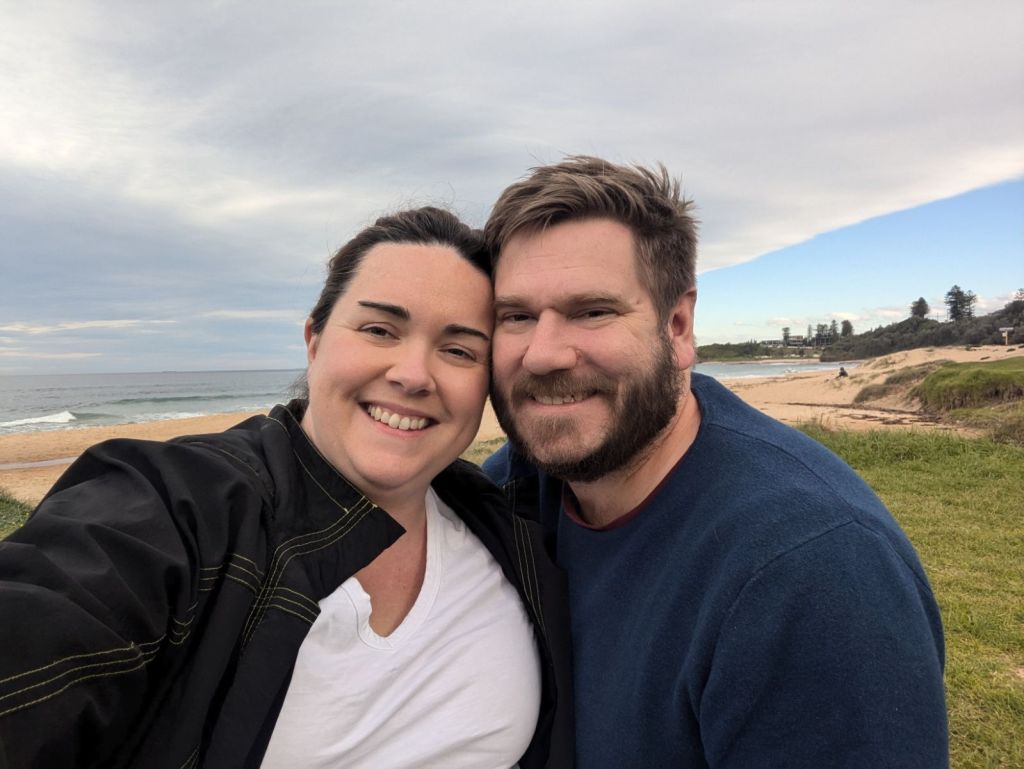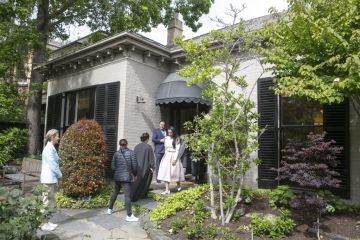Jacqui and Tim's 'special' Christmas in own home after 15 years of renting
This Christmas will be the first for Jacqui Knight and her husband Tim in their own home after 15 years of renting.
The couple, who are parents to two young children, have purchased in Sydney’s leafy outskirts after a protracted period of saving and 12 months of hunting.
They are happily hanging holly on the door at a time Australian first-home buyers are taking on bigger mortgages than 12 months ago.
The average first-home buyer loan is more than $530,000, new real estate industry figures show. Getting on the property ladder is not a matter of taking a step – it’s an Everest climb.

Jacqui, 38, says the suburb she and Tim, 41, wanted to buy in – Jannali, about 30km south of Sydney’s CBD – was rising by more than $20,000 a month in price. Their savings could not keep pace.
The Knights instead bought in neigbouring Bangor, in the Sutherland Shire. It appealed for its proximity to their children’s school and their relatives.
Mortgage sizes for first-home buyers have risen by 6.7 per cent over 12 months to land at $536,561, the Real Estate Institute of Australia’s latest Housing Affordability Report reveals.
The average loan size for a debutant buyer dropped in New South Wales, Tasmania and Canberra, but increased elsewhere, according to the REIA statistics.

Despite the financial challenges, the number of first-home buyers entering the market is up, compared the same time last year. Of the new loan commitments made nationally in the three months to September, 29,445 were to first-home buyers (36 per cent of total loans). This was a jump of 9.4 per cent, year-on-year.
Agent Nick Scognamiglio, Little Real Estate’s NSW state sales leader, says contemporary apartments and terraces with work to be done remain top picks for first-time Sydney buyers.
Terraces requiring a renovation in suburbs including Erskineville and Alexandria are enduringly popular, he says. For university-age buyers, Scognamiglio says parents are helping them to acquire apartments near to campuses.

“Parents are chipping in, as joint ventures,” Scognamiglio says. “Glebe, Newtown – that is where young people are going to university and they want to live close by.
“They are looking at clean and modern apartments, which have facilities and are pet friendly.”
Scognamiglio says Waterloo, an inner-south suburb, is now classed as an extension of hip Redfern.
The evolution of the suburb, which has a proudly industrial heritage, has provided an entry for first-home buyers who can’t muster the price for Redfern – which is often their first pick.
“Waterloo is now trendy,” he says. “It is so close to Darlinghurst and Surry Hills, which is where the young people want to be, but they can’t afford to be.”
The Knight clan made similar compromises. Having run the gauntlet of the market, the lead-in to Christmas has been particularly special.

“It feels really great and we have enjoyed decorating the new house for Christmas,” Jacqui says.
“We were living in Jannali and really liked it but the prices were going up too much. When we engaged a buyers’ agent she told us the prices were going up by $23,000 a month. It was too much to keep saving for.
“Our daughter was going to school in Bangor and it was a ten minute drive to where we were staying. It is close to the bush, really leafy and has great schools and a community.”
Jacqui, the director of Virtual Support Specialists, a HR advisory firm for the not-for-profit sector, says Bangor does not have a train station and that was its only drawback.

“The children really love seeing their grandparents and we did not want to spend weekends driving for an hour-and-a-half each way to have a cup of tea,” she says.
“In the grand scheme of things that was a minor thing we had to overcome.”
We recommend
We thought you might like
States
Capital Cities
Capital Cities - Rentals
Popular Areas
Allhomes
More










